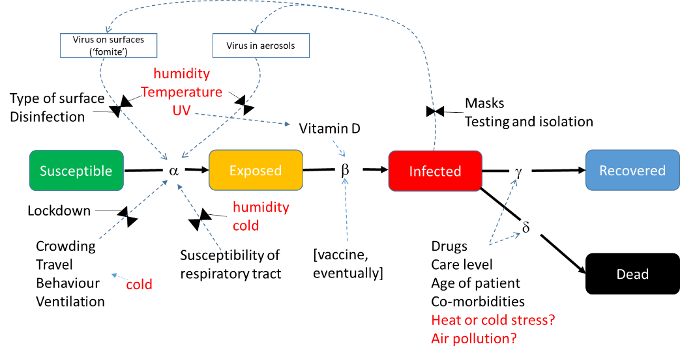SARS-CoV-2 virus infections in humans were first reported in December 2019, the boreal winter. The resulting COVID-19 pandemic was declared by the WHO in March 2020. By July 2020 COVID-19 is present in 213 countries and territories, with over 12 million confirmed cases and over half a million attributed deaths. Knowledge of other viral respiratory diseases suggests that the transmission of SARS-CoV-2 could be modulated by seasonally-varying environmental factors such as temperature and humidity. Many studies on the environmental sensitivity of COVID-19 are appearing online, and some have been published in peer-reviewed journals. Initially, these studies raised the hypothesis that climatic conditions would subdue the viral transmission rate in places entering the boreal summer and that southern hemisphere countries would experience enhanced disease. For the latter, the COVID-19 peak would coincide with the peak of the influenza season, increasing misdiagnosis and placing an additional burden on health systems. In this review, we assess the evidence that environmental drivers are a significant factor in the trajectory of the COVID-19 pandemic, globally and regionally. We critically assessed 42 peer-reviewed and 80 preprint publications that met qualifying criteria. Since the disease has been prevalent for only half a year in the northern, and a quarter of a year in the southern hemisphere, datasets capturing a full seasonal cycle in one locality are not yet available. Analyses based on space-for-time substitutions, i.e. using data from climatically distinct locations as a surrogate for seasonal progression, have been inconclusive. The reported studies present a strong northern bias. Socio-economic conditions peculiar to the ‘Global South’ have been omitted as confounding variables, thereby weakening evidence of environmental signals. We explore why research to date has failed to show convincing evidence for environmental modulation of COVID-19, and discuss directions for future research. We conclude that the evidence thus far suggests a weak modulation effect, currently overwhelmed by the scale and rate of the spread of COVID-19. Seasonally-modulated transmission, if it exists, will be more evident in 2021 and subsequent years.

